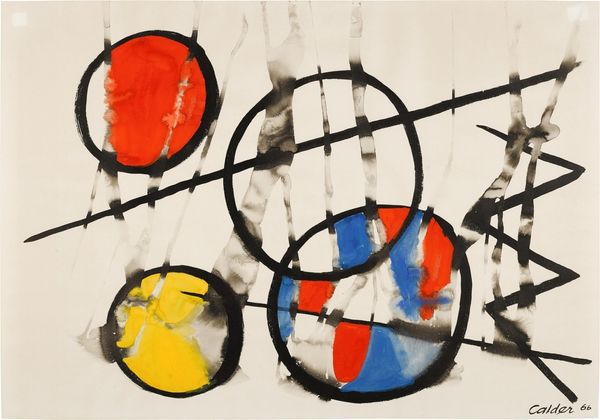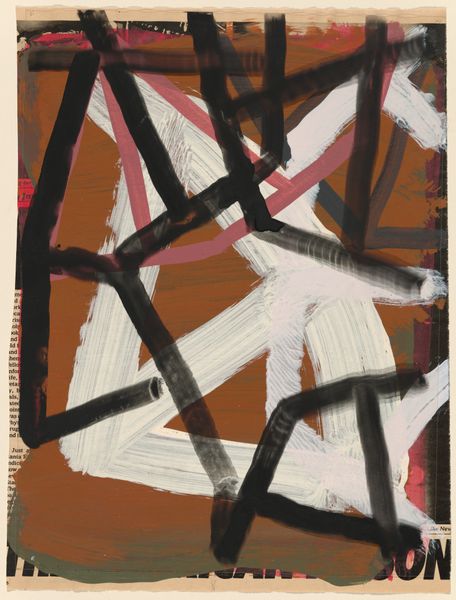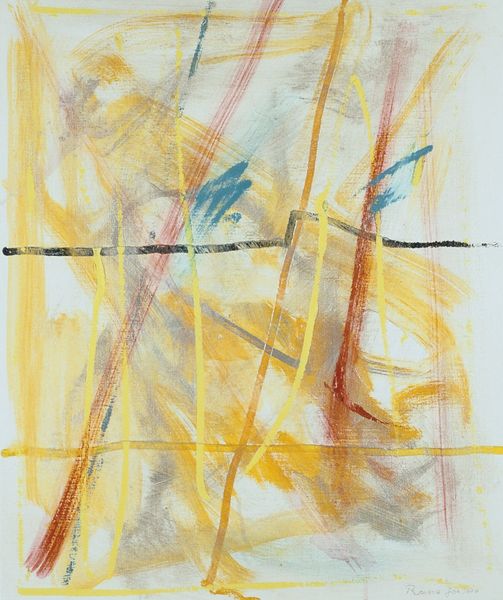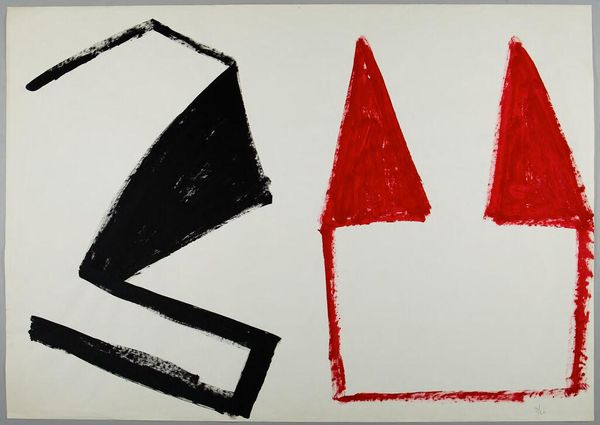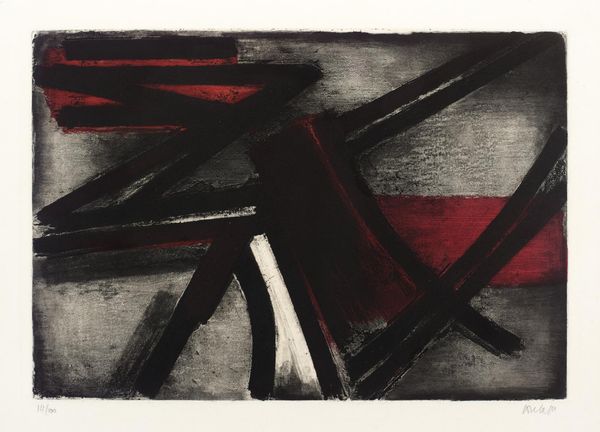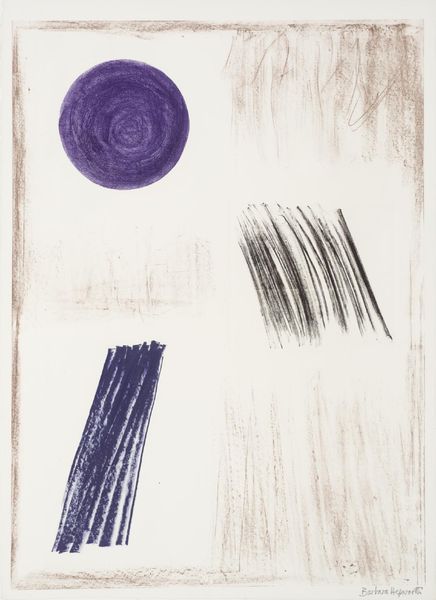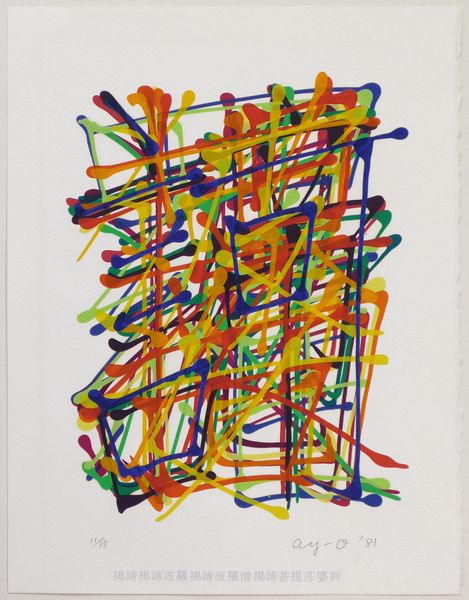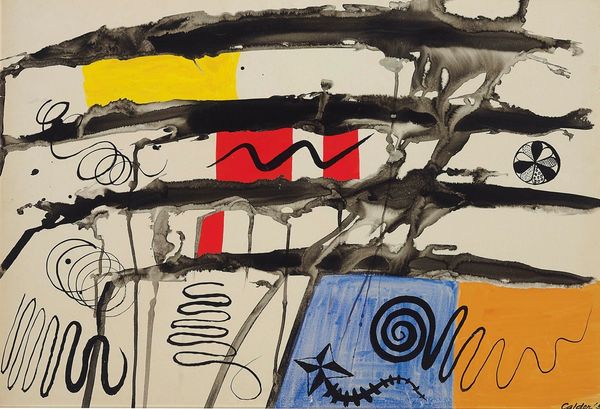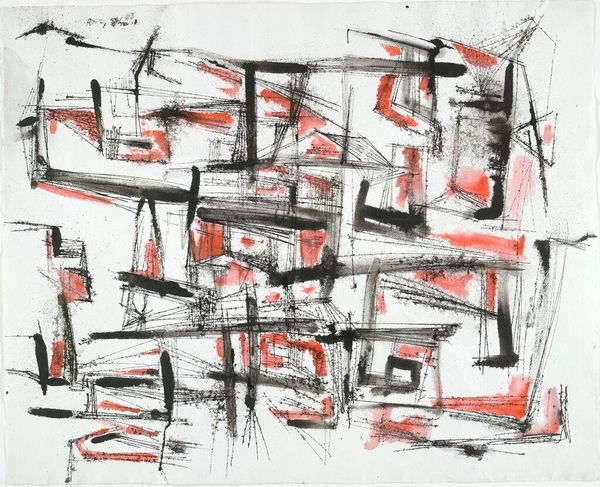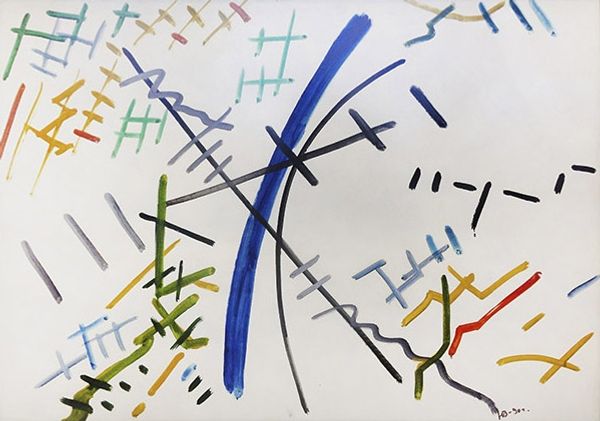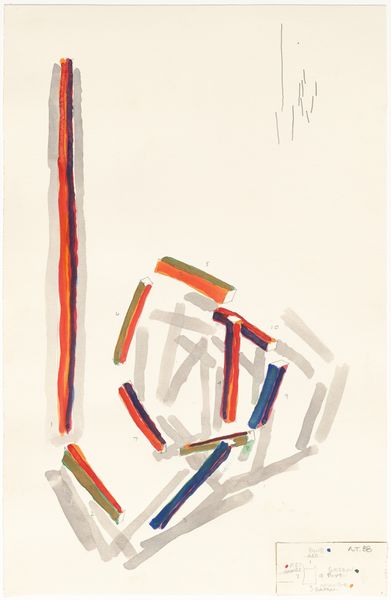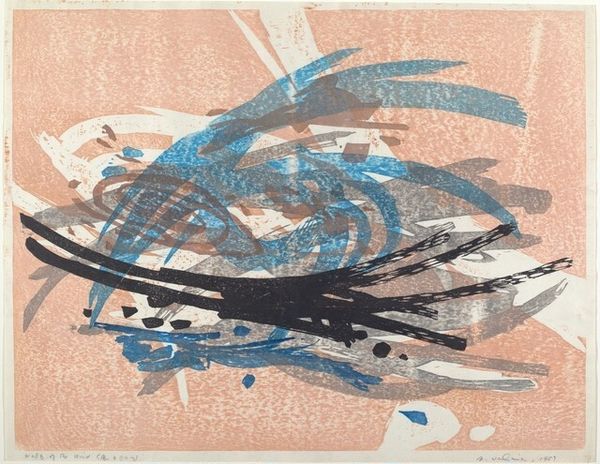
painting, watercolor
#
abstract-expressionism
#
painting
#
abstract
#
watercolor
#
geometric
#
line
#
modernism
#
watercolor
Copyright: Modern Artists: Artvee
Alexander Calder made this watercolor painting, Central Frond, on paper at some point in his career. We see a series of abstract brushstrokes of color—red, blue, and black—that seem to evoke a sense of organic growth and movement. But what are the social conditions that might have encouraged Calder to move away from representation? Calder came of age as an artist in the early twentieth century, a period of rapid industrialization and social change. His abstract style reflects the progressive spirit of the avant-garde, a break from traditional academic styles, an embrace of experimentation and innovation. Calder's work also sits at an interesting point in the history of art institutions themselves: modern art museums were still relatively new in Calder's time, and his style challenged the established norms of the art world. To better understand Calder's work, we might consult exhibition catalogs, art criticism from his time, and biographical accounts of his life and career. Ultimately, art is not created in a vacuum; it reflects the social, cultural, and institutional forces of its time.
Comments
No comments
Be the first to comment and join the conversation on the ultimate creative platform.

